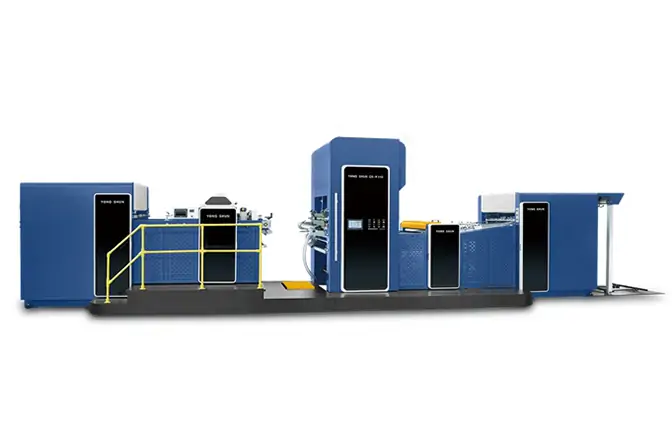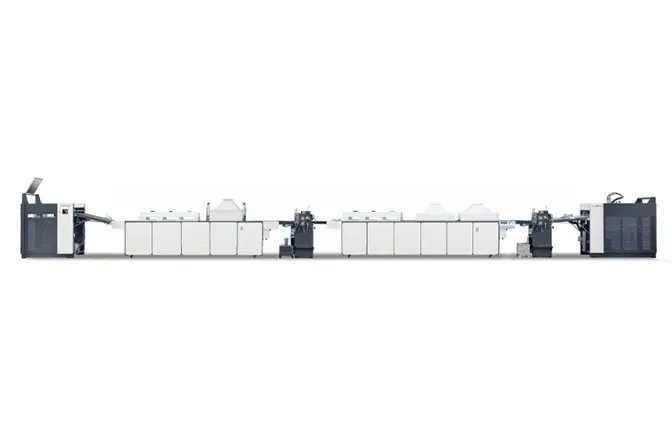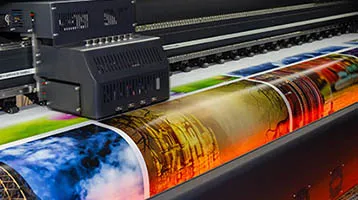Your bottom line, production efficiency, and product quality are all directly affected by your choice of an automatic film laminating machine. Being aware of your unique needs is essential, as options range from high-speed industrial systems to flexible laboratory units. Here are some tips for navigating the selection process with ease.
The first choice depends on how sensitive your material is to heat:
Adhesive films are activated by heated rollers (100–204°C) in hot laminating machines. They produce strong, high-barrier seals for goods needing temperature resistance and are perfect for BOPP, PET, or food packaging films. For glossy book covers or stiff packaging, machines like those with CERACON heater rollers guarantee bubble-free finishes.
Pressure-sensitive adhesives are applied at room temperature by cold laminating machines. They prevent thermal distortion when protecting materials that are sensitive to temperature, such as RFID inlays, self-adhesive labels, or delicate ultrasound prints.
Different substrates are handled by contemporary PLC-controlled laminating machines:
Papers: Corrugated board (E, B, C, D, and A flutes) and tissue (125 gsm).
Films: silicone-coated release liners for labels, anti-static PET for electronics, or polyethylene (PE) for food bags that are resistant to moisture.
Specialties contain rubber magnets, leather, copper sheets, and metalized foils.
For instance, in order to avoid wrinkles while high-speed runs, laminating machines for flexible packaging frequently use precision tension control (±1%) to combine PET films with paperboard.
Automation and labor costs are directly correlated:
SMEs that process in batches benefit from semi-automatic models. Devices such as dual-turntose laminators double output for carton production by enabling manual feeding while automating glue application and pressure control.
Large-scale operations require fully automated systems. Keep an eye out for:
- Roll-to-roll film unwinding (maximum Ø850mm).
- Defect elimination in-line (e.g., RFID misalignment detection).
- 600 m/min integrated slitting.
- PLC interfaces with predefined speed/thickness profiles.
Beyond core functions, prioritize these technologies:
- Speed & Precision: Entry-level units manage 500 mm/min (A3 documents); industrial systems hit 60 m/min with ±0.5mm slit accuracy.
- Tension Control: Center rewinding + ultrasonic edge guides (e.g., Germany E+L systems) prevent film telescoping.
- Smart Add-Ons:
Auto defect for RFID inlays.
PID temperature controllers for ±1°C stability.
Sleep modes for energy efficiency.
- Packaging: Create moisture-resistant food pouches (PE/OPP films) or rigid boxes (cardboard-PET laminates).
- Printing: Glossy magazine covers (cold laminate) or map waterproofing (hot laminate).
- Electronics: RFID tag fabrication (dry/wet inlay lamination at 60 m/min).
- Promotional Items: Scratch cards, synthetic fabric banners, or metallic finishes.

1. Volume: <100 sheets/day? Choose semi-auto (e.g., 45 m/min units). >1,000? Opt for fully automatic systems with loading/unloading arms.
2. Material Thickness: Ensure compatibility (e.g., 0.08–0.6mm films or 125–300 gsm paper).
3. Facility Space: Benchtop laminators fit labs (520×210 mm); industrial units need ~9m×2m floorspace.
4. Post-Sales Support: Prioritize suppliers offering operator training, 24/7 hotlines, and modular upgrades.
Whether you’re scaling packaging lines or launching RFID tags, the right automatic film laminating machine transforms quality and throughput. Book a free consultation + material test with our engineers to match your product with precision lamination technology.
➔ Request Your Customized Machine Proposal




GET A QUOTE